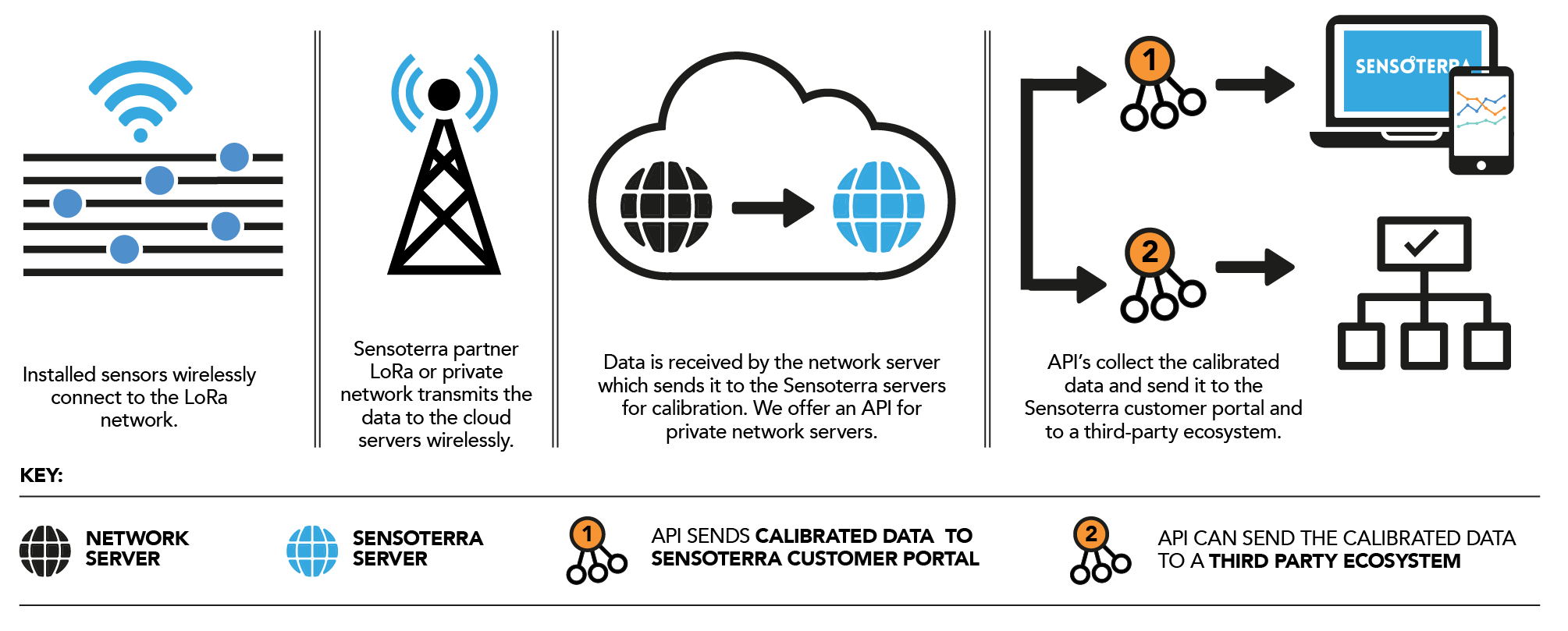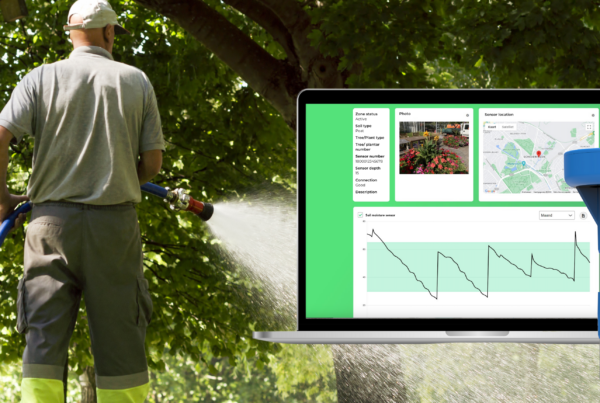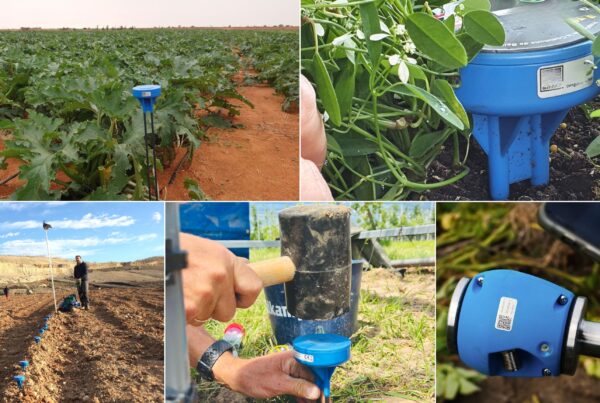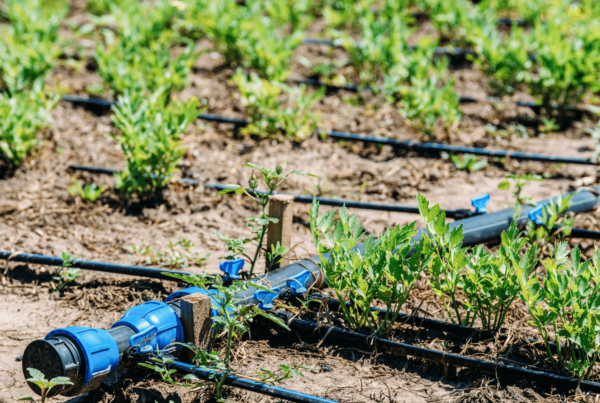In the realm of IoT communication protocols, choosing the right one is crucial for ensuring seamless connectivity and optimal performance of wireless devices. Sensoterra, a leading developer of wireless soil moisture sensors, has strategically selected LoRaWAN over other options like Bluetooth, Wifi, SigFox, or NbIoT. This decision stems from a deep understanding of the unique requirements of soil moisture monitoring and the distinct advantages that LoRaWAN offers in this domain. Here’s why it works.
Is LoRaWAN Better than Wi-Fi?
While both LoRaWAN and Wi-Fi are wireless communication protocols, they serve different purposes and operate in distinct environments. Wi-Fi is commonly used for high-speed data transmission over short distances, making it suitable for indoor applications with reliable power sources. In contrast, LoRaWAN is optimized for long-range communication with low power consumption, making it ideal for outdoor deployments over vast agricultural fields or remote landscapes where traditional Wi-Fi connectivity may be impractical or unavailable.
What is the Difference Between LoRa and LoRaWAN?
LoRa (Long Range) is the physical layer modulation technology developed by Semtech, offering long-range communication capabilities with low power consumption. LoRaWAN, on the other hand, is a networking protocol built on top of LoRa, enabling secure and efficient communication between LoRa-enabled devices and a central network server. In essence, LoRa provides the underlying technology for long-range wireless communication, while LoRaWAN defines the communication protocol and network architecture for IoT applications.
What is LoRa Used For?
LoRa technology finds applications in various industries, including agriculture, smart cities, industrial automation, and environmental monitoring. In agriculture, LoRa-based solutions are utilized for precision irrigation, soil moisture monitoring, crop health management, and asset tracking, enabling farmers and landscape managers to optimize water usage, enhance yields, ensure plant health and reduce operational costs.
Does LoRaWAN Require Wi-Fi?
No, LoRaWAN operates independently of Wi-Fi infrastructure. It utilizes a dedicated network architecture consisting of gateways, which communicate with LoRa-enabled devices using LoRa modulation techniques. These gateways then forward the data to a centralized network server via backhaul connectivity such as Ethernet, cellular, or satellite communication. Therefore, LoRaWAN does not rely on traditional Wi-Fi networks for connectivity, making it suitable for remote or outdoor deployments where Wi-Fi may not be available.
How Do I Set Up a LoRaWAN Network?
Setting up a LoRaWAN network involves deploying gateway devices strategically across the desired coverage area. These gateways receive data from nearby LoRa-enabled sensors and forward it to the network server for processing. The network server manages the communication between gateways and devices, ensuring secure and reliable data transmission. Additionally, organizations can leverage existing LoRaWAN infrastructure deployed by network operators or deploy private LoRaWAN networks tailored to their specific requirements.
How Do I Connect My Device to LoRaWAN?
To connect a device to a LoRaWAN network, it must be equipped with a LoRa-compatible transceiver module and be provisioned with the necessary credentials, including device EUI, application EUI, and application key. Once configured, the device can communicate with nearby LoRaWAN gateways using LoRa modulation techniques, transmitting data packets to the network server for processing and analysis.
Can I Use LoRaWAN Without Internet?
While LoRaWAN relies on backhaul connectivity for data transmission to the network server, it is possible to deploy private LoRaWAN networks without direct access to the internet. In such scenarios, organizations can implement local network servers or edge computing solutions to process and analyze sensor data locally, enabling real-time insights and actionable intelligence without the need for continuous internet connectivity.
Do You Need a Gateway for LoRaWAN?
Yes, gateways are essential components of a LoRaWAN network infrastructure. These gateways serve as intermediaries between LoRa-enabled devices and the centralized network server, receiving data packets from nearby devices and forwarding them to the server for processing. The number and placement of gateways depend on factors such as coverage area, network capacity, and desired data reliability.
Data Flow
- Hourly EC values are measured in the field with wireless sensors
- Data is sent from the sensors, via the LoRaWAN network, uplinked to the cloud to the Sensoterra servers for calibration and interpretation
- Interpreted data as volumetric water content percentages, is then made available via the Sensoterra Monitor App or integrated into a (custom) dashboard via the OpenAPI

Sensoterra’s choice of LoRaWAN as the preferred communication protocol for wireless soil moisture sensors is rooted in its unparalleled advantages in long-range communication, low power consumption, and suitability for outdoor deployments. By leveraging LoRaWAN technology, Sensoterra enables land and water managers to monitor soil moisture levels with precision, optimize water usage, and enhance agricultural productivity while minimizing operational costs and environmental impact.
By understanding the distinct capabilities of LoRaWAN and its compatibility with Sensoterra’s mission to provide actionable insights for water management decisions, it becomes evident why LoRaWAN stands out as the superior choice for wireless soil moisture monitoring applications.
About Sensoterra
Sensoterra develops low-cost, simple, and robust wireless soil moisture sensors, providing actionable insights that enable water management platforms and solutions. Our sensors are built to integrate into any platform with our unique ‘API first’ philosophy – offering freedom and flexibility for data integration. It is our mission to enable water management platforms and solutions worldwide. We help by ‘Making Sense of Water’. We produce simple, robust, and low-cost wireless soil moisture sensor that are easy to deploy and built to integrate. With proven success in the applications of smart city landscaping, environmental monitoring, and precision agriculture, the Sensoterra solution integrates seamlessly in existing water and land management platforms.
Learn more at www.sensoterra.com
Contact for more information, pictures and/or interview requests:
Jessica Nuboer
Marketing & Communications
Sensoterra
Email: [email protected]





